Large pieces of meat like beef brisket and pork butt take hours to smoke. By using the Texas crutch method, you can reduce that time significantly and lock in moisture to create better barbecue.
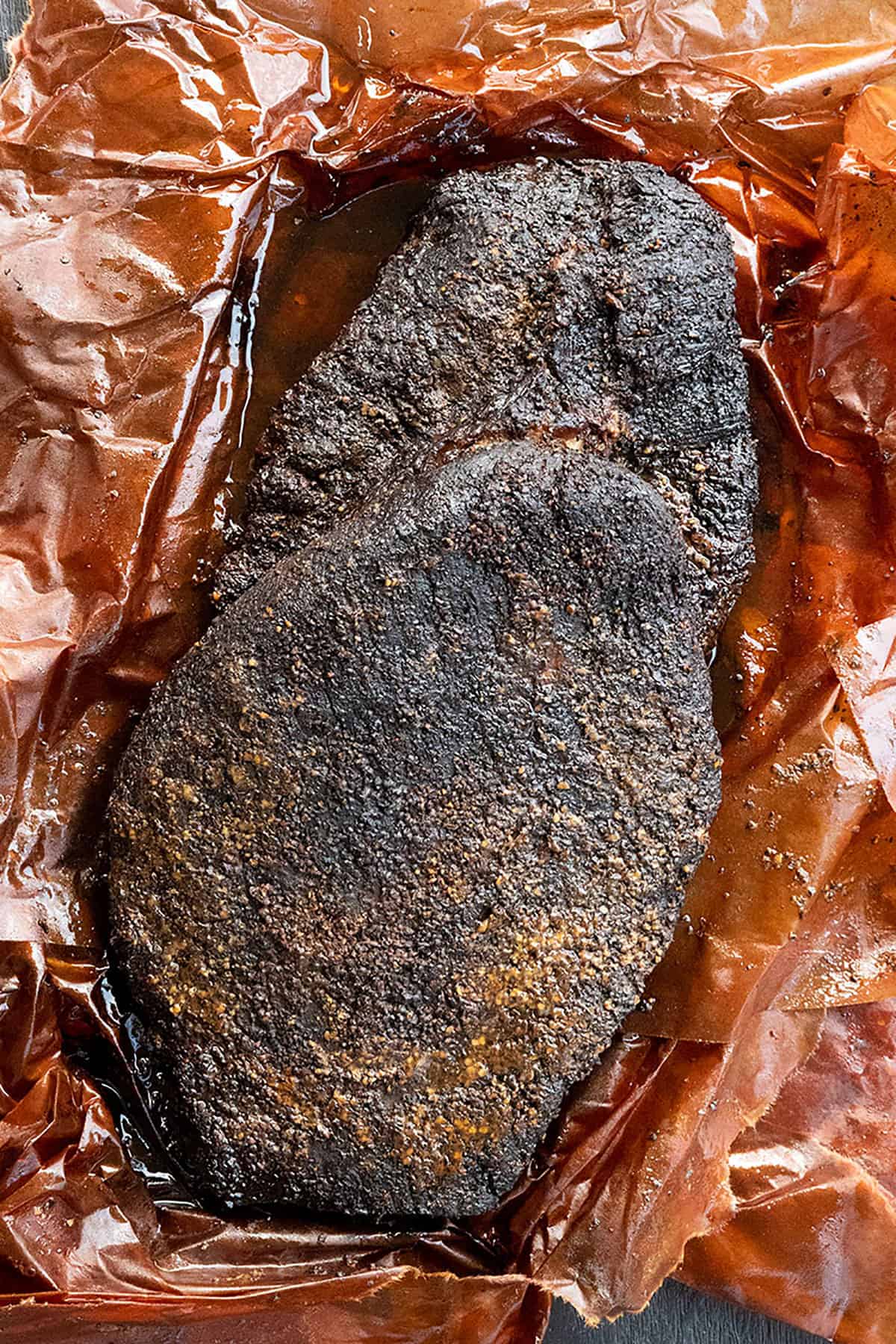
Save this BBQ Tip
Enter your email, and I’ll send this link directly to your inbox. Plus, you’ll get new BBQ recipes and tips weekly.
Table of Contents
- What is the Texas Crutch
- When to wrap brisket
- Butcher Paper vs. Foil vs. Pan
- How to wrap brisket in butcher paper
- Adding liquid to your wrap
- How long to cook brisket after wrapping
- When to unwrap the texas crutch
- Frequently Asked Questions
- More FAQs about Brisket
- Brisket Recipes
- Recipes that Use the Texas Crutch
When it comes to barbecue, everyone has their own style, and there are true diehards out there who swear by their methods. Some say the Texas crutch is a Texas cheat and others use it and win world championships.

What is the Texas Crutch
Put simply, the Texas crutch is a technique where you wrap large proteins with paper or foil part of the way through the smoking process to speed up the cook.
If you’ve ever smoked a brisket or pork butt, you’re probably familiar with the stall period. This occurs during the cooking process after the meat has been on the smoker for several hours. During the first few hours, you’ve watched the temperature steadily climb, but then all of a sudden, that climb stops.
The meat temperature stays steady and just stalls, sometimes for hours.
According to Diana Clark, a meat scientist with Certified Angus Beef, the stall happens because meat is 70-75% water. As that water heats up, it reaches the point of evaporating.
She said it is during that time that the cooking of the meat stalls as more energy (heat) is being put into evaporation (removing water) than cooking the meat.
The Texas crutch helps push through that stall faster.
You are welcome to wait several hours for the meat to break through the stall naturally, or you can try the Texas crutch.
If you don’t wrap your meat, you can eventually get through the stall (everything takes time and temperature!) You might end up with a thicker bark, but you also can have a less moist product.
Diana Clark – Meat Scientist, Certified Angus Beef
When to wrap brisket
Some people go by temperature. They keep a temperature probe in the meat from the start of the cook, and they watch the temperature and wait for it to stall. This usually happens when the meat hits 160-165F degrees.
Another method is to wrap when the bark forms a dark mahogany color. I learned this technique from World Champions Brad Leighninger of Gettin’ Basted and Tim Scheer of Shake ‘N’ Bake BBQ.
They have been cooking barbecue for so long that they can look at a brisket and know when it’s reached the 160F-degree mark. It only took me cooking a couple of briskets to find that same groove.
The wrap on color method works for brisket, pork butt and ribs. Whenever you notice the bark looks rich and thick, apply the Texas crutch and get wrapping.
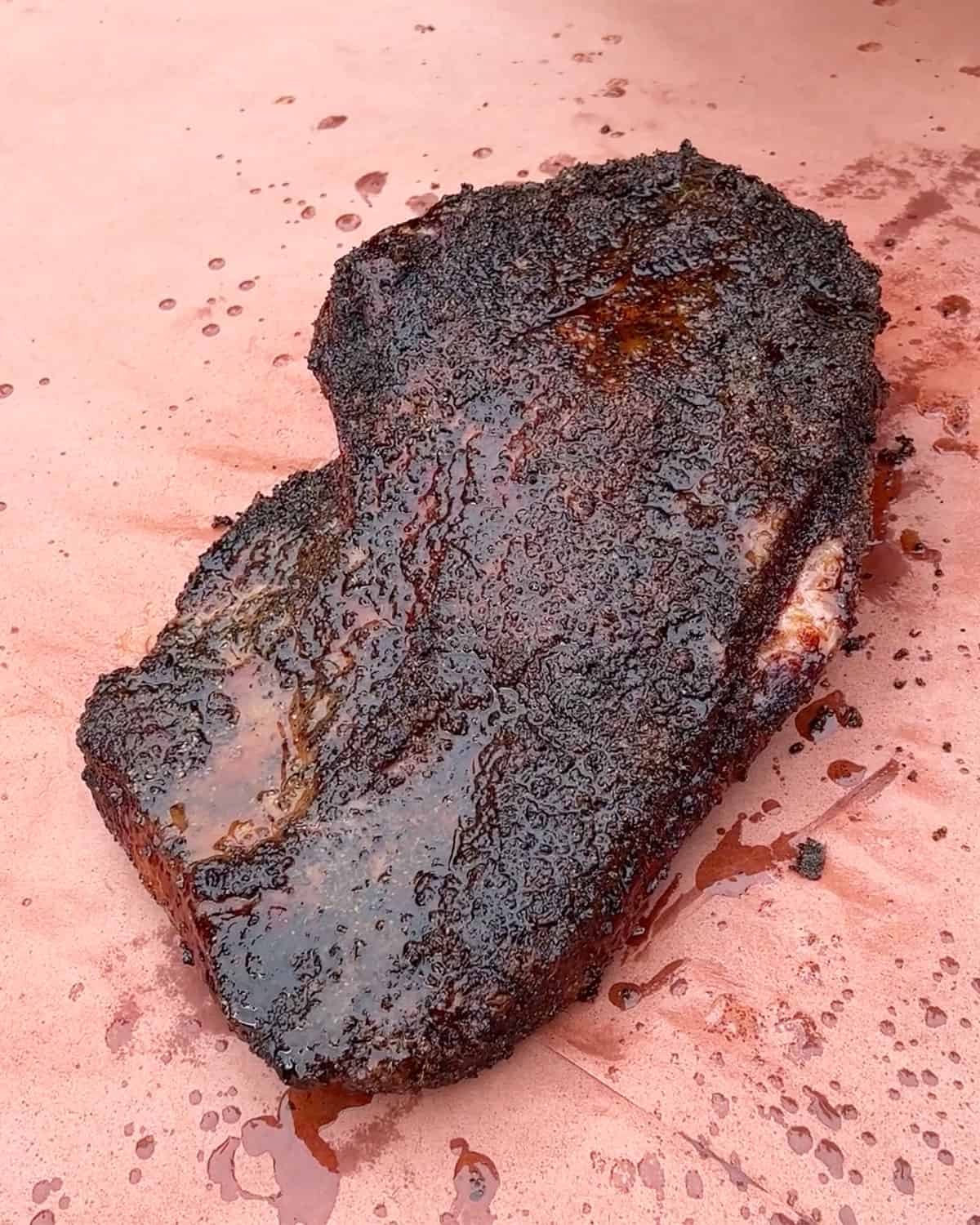
Butcher Paper vs. Foil vs. Pan
When you wrap your meat, you can use butcher paper, foil or a pan.
Butcher Paper
Butcher paper is unwaxed food-grade paper that comes in a long roll. If you can find 36-inch wide paper, grab some. Otherwise, use the 18-inch thick paper and overlap two pieces slightly to create a wider piece.
The advantage of using butcher paper is that it allows the meat to still breathe, which means your bark will stay more intact, because it won’t steam off.
The disadvantage of using butcher paper is that it won’t retain as much moisture, so if you’re cooking in an arid climate or at a high altitude where you need as much moisture as you can get, your meat could end up on the drier side.
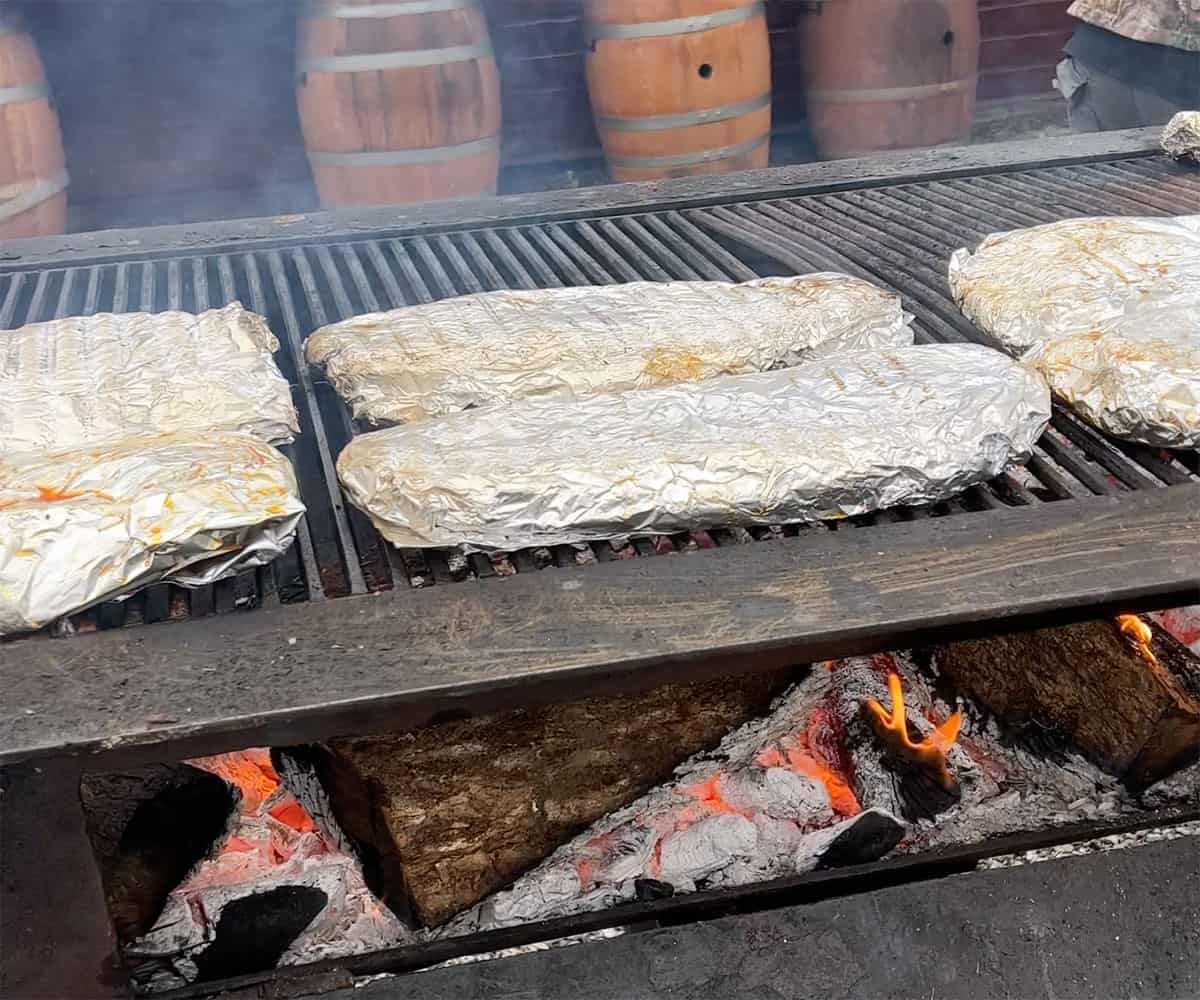
Aluminum Foil
Another option is to wrap the meat in foil. I use four sheets of 18-inch heavy-duty foil. Overlap two sheets to create a wider surface. Then, add two more sheets on top just to make sure the foil is strong enough.
The advantage of foil is that it will help lock in moisture and reduce cook time. However, it is more fragile, so you have to be careful not to puncture it, so the juices don’t escape.
Also, your bark won’t be quite as crispy, because the liquid will keep it softer.
Pan
The last Texas crutch method is the pan method. This is where you place the meat in a disposable aluminum pan, add some mop and cover it with foil.
This is a method many competitive pitmasters use, especially when cooking hot and fast brisket. When you cook at higher temps, you need to adjust and add as much moisture as possible.
With this method, you get the least amount of crispy bark, because there is a lot more steam. The advantage though is that you get a super tender, moist brisket.
PRO TIP: When I'm smoking meats in competitions, I use the pan method, because I cook hot and fast. When cooking in my backyard at lower temperatures, I use the butcher paper or foil methods.
How to wrap brisket in butcher paper
In the above video, Arnis Robbins with Evie Maes BBQ in Lubbock, Texas, demonstrates how he wraps his briskets in butcher paper.
He sprays them with apple cider vinegar and drizzles on beef tallow, which is rendered brisket fat that he made from the trimmings.
Arnis folds the short end of the paper over the meat. Then, he folds the sides in toward the center.
Finally, he wraps the long end of the paper over the brisket, securing it tightly and tucks the end piece under the paper so it remains fat side down.
Adding liquid to your wrap
I always add some sort of liquid or mop to my wrap before I seal everything up.
- When cooking brisket, I add some beef consume combined with some of my award-winning Brisket Rub.
- For pulled pork, I add Carolina vinegar mop sauce.
- For ribs, I add brown sugar, honey, butter and sometimes a little apple or grape juice.
Adding the liquid can be a little tricky when using foil and butcher paper. It’s easiest to partially enclose the meat first and then gently pour in the liquid. Then, wrap it as tightly as you can and return the package to the smoker.
How long to cook brisket after wrapping
The time it takes for the meat to be done depends on so many factors, such as the temperature you’re cooking at, the size of the meat, your climate and your altitude.
Obviously, if you’re slow cooking a brisket at 225F degrees compared to 300F degrees, it will take longer.
An 11-pound whole packer brisket smoked at 225F degrees will take about three hours in the crutch. Whereas a brisket flat in a pan smoked at 300F degrees will take about two hours.
A 6-8-pound pork shoulder can take 2-4 hours, and ribs can take 1-2 hours.
The main thing is to keep the meat wrapped and on the grill up until it reaches the best internal temperature for that protein.
- Brisket: usually around 203-210F
- Pork: aim for 197-203F
- Pork ribs: look for the internal temperature to hit 203-214F
Use a Thermoworks Thermapen One to probe the meat to get an instant read. For each protein you want the probe to glide in like butter. If there is resistance, keep cooking.
The craft of barbecue is all about mastering your environment, your meat, and your fire and adapting to all three.
Pitmaster Christie Vanover

When to unwrap the texas crutch
Once your meat reaches the final desired temp, you’ll be tempted to remove it from the smoker and unwrap it, but wait.
You should hold your brisket in a cooler without ice for a good 1-3 hours. Pork shoulder and ribs should also be allowed to rest for at least 30-60 minutes.
This allows the juices to settle and redistribute into the meat, locking in that moisture, which is one of the key purposes of the Texas crutch, ensuring your barbecue is tender and juicy.
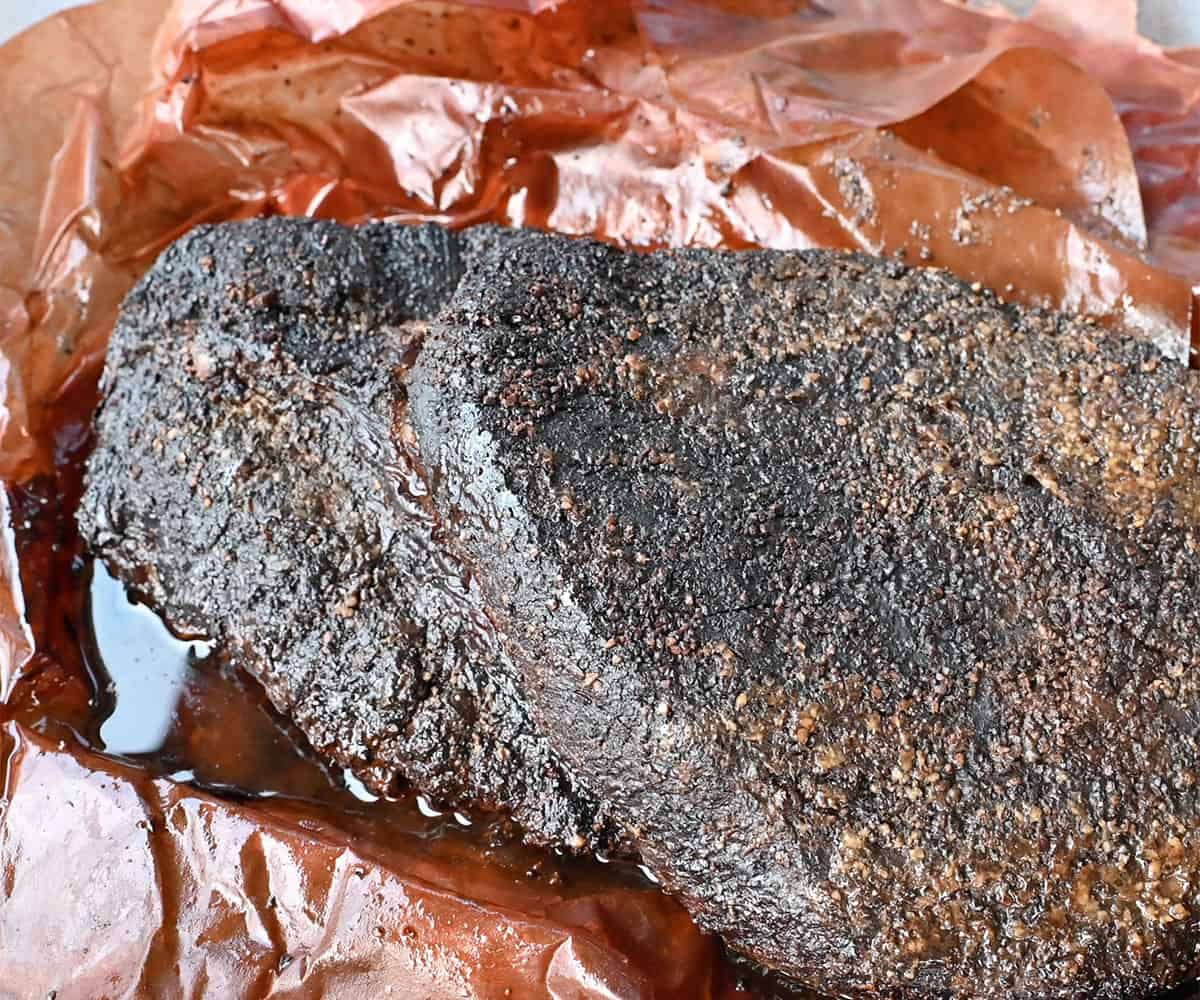
Frequently Asked Questions
There are two ways to monitor temperatures with the Texas crutch. You can wrap your meat and then pierce through the paper or foil with a temperature probe on a remote thermometer. You can also use an instant read thermometer and pierce through the wrap toward the end of the cook. Note: the paper will be a little more difficult to puncture.
The bark on your meat will form before you reach the Texas crutch phase. However, type of wrap you use and the amount of liquid you use will determine how crispy that bark will be at the end of the cook. If you use butcher paper and spritz the meat with some apple cider vinegar, you’ll have a crispier bark. If you wrap in foil and use broth, your bark will be a little more soggy, but your meat will be more tender.
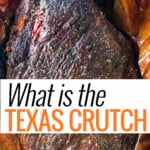
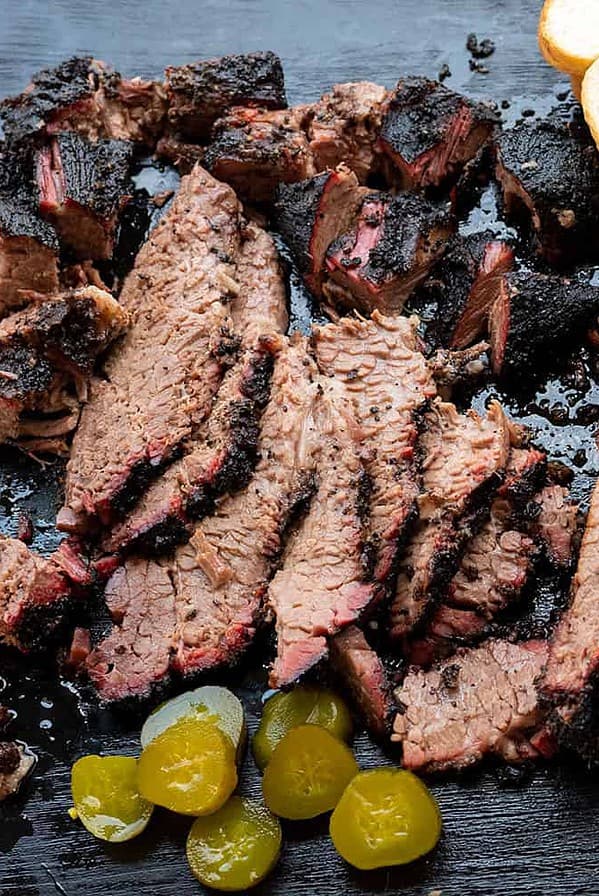


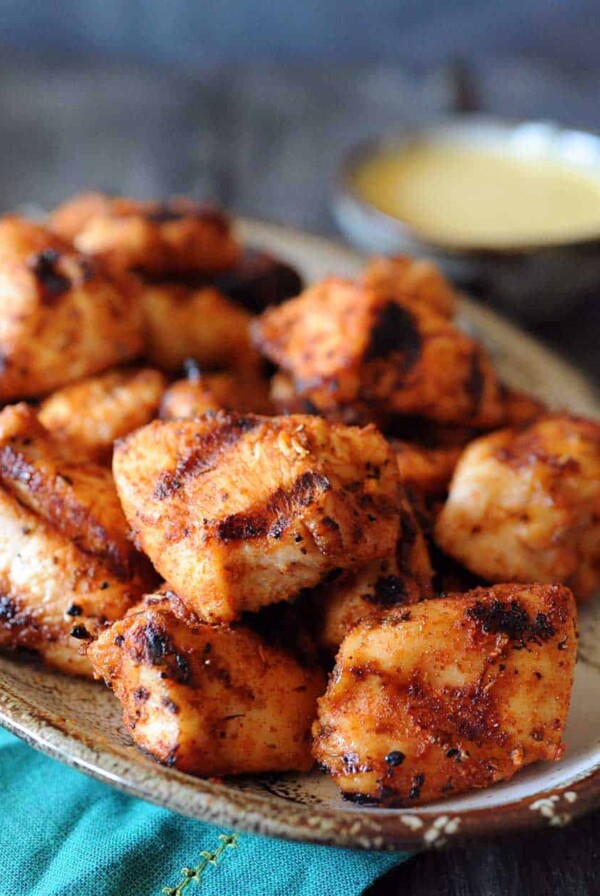
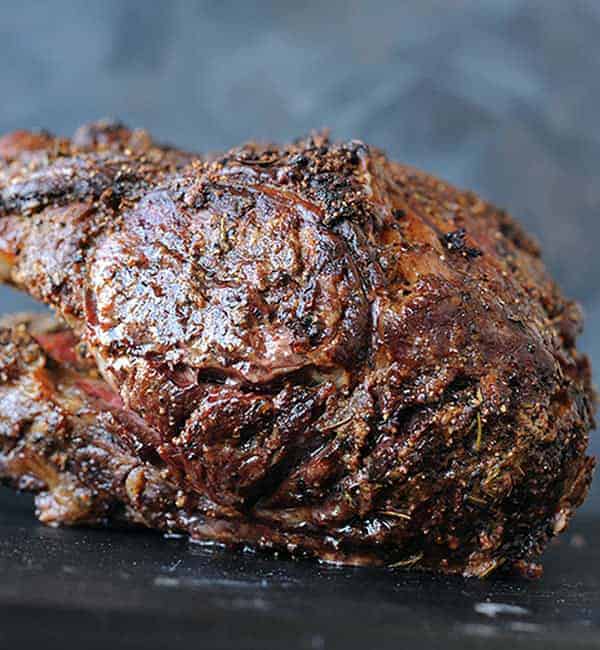
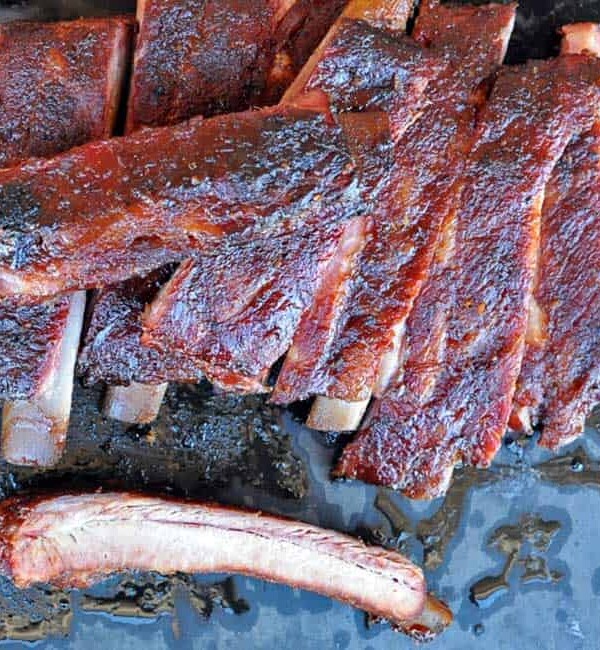
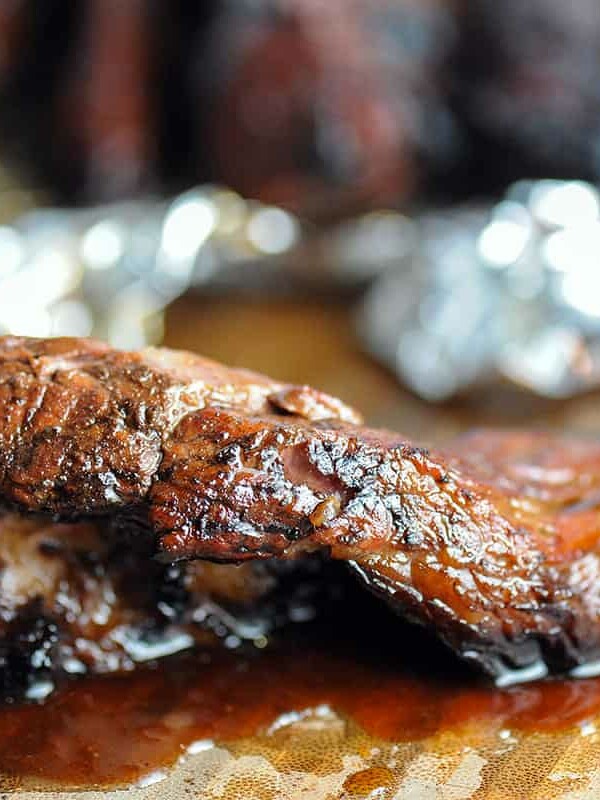









WOW, I’ve been grilling for years but I learned more in 15 minutes reading your methods than all of the years of grilling and hanging out at cook offs.
So happy I could help. Thanks.